
How to Stay Fresh but Stay You with Branding for Seasonal Marketing
Express a Different Side of Your Brand’s Personality, Capture a New Audience, or Pivot Temporarily
By: Uriah Fracassi | Branding Church Branding Communications & Marketing
How Do You Stay “You” and Accomplish Something New?
We’re going to assume you have the best brand on earth (because we believe in you!).
You’ve got the right colors and a great logo. But there inevitably comes a time when your brand gets a little stale. When you’ve seen that blue three billion times. Or this same email opener three trillion times.
What happens then—when everyone’s so used to seeing your brand that it starts becoming background noise?
Here’s what NOT to do:
- Freak out. (OK, maybe a little.)
- Copy all the latest trends.
- Scrap everything and completely redo your brand.
Your mission is to reach people and change lives! That’s worth holding onto. You want to stay fresh … but you also have to stay you. How do you do that?
The answer: branding for seasonal marketing (aka seasonal branding).
Here’s a quick rundown of how to develop branding for seasonal marketing:
- Discovery: What needs to change and why?
- Messaging: How do you want to sound?
- Visuals: How do you want to look?
- Application: Get your whole team onboard.
Bonus: Download a free seasonal brand checklist!
But First … What Exactly Is a Seasonal Brand?
Branding is intentional communication that invites your audience to join your mission in ways meaningful to them.
So seasonal branding is intentional communication that invites your audience to join your mission in different ways. Or it can invite a different audience altogether.
Branding for seasonal marketing is perfect for expressing a different side of your brand’s personality, capturing a new audience, or pivoting temporarily. Here’s when you might need a seasonal brand:
- Events and campaigns
- Holidays
- Sermon series
- Times of the year
- Leveraging trends

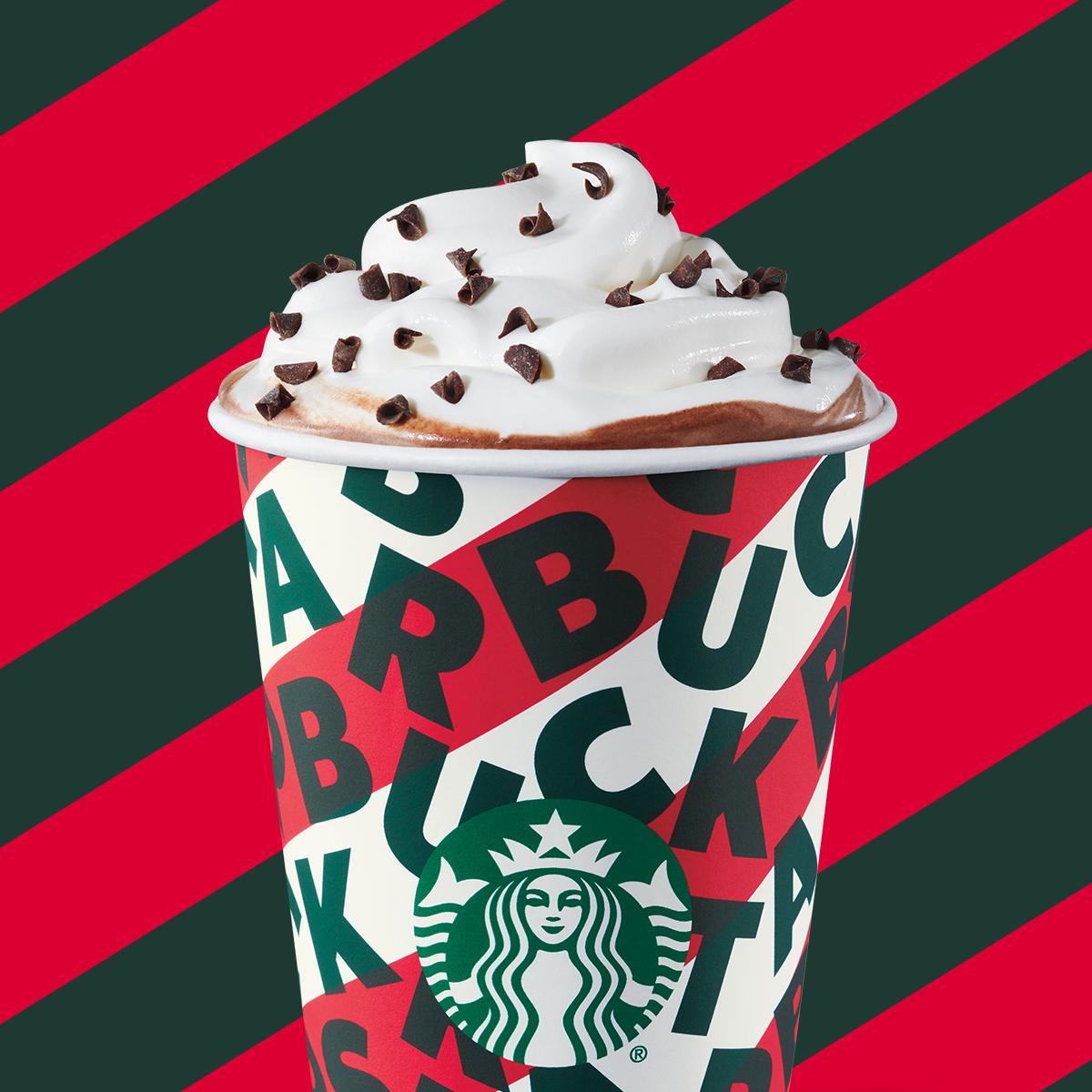
We see seasonal marketing all the time. Starbucks uses it each year for pumpkin spice season and Christmas. They release products you can get only at that time of year. They keep their logo the same, change their cups, and create content with new visuals and messaging to make you feel the warmth of spicy fall beverages and the jolliness of Christmas. But you can tell they’re still the same Starbucks you know and (maybe) love.
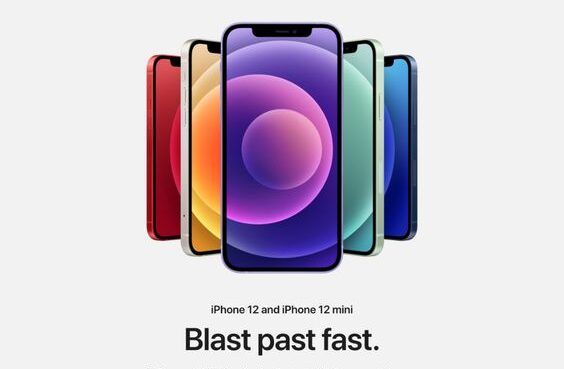

Apple creates a seasonal campaign for each iPhone release. They differentiate each year’s iPhone by highlighting a core feature. They change up the colors and messaging, but the logo, fonts, and tone stay the same. So you feel the sense of speeding ahead with an iPhone 12, or the sense of unbreakability with an iPhone 15 Pro. But you know you’re getting a quality Apple product either way.


In the church world, we developed a seasonal brand for Exponential to help them promote their annual conference. Exponential is a community of church leaders that multiples healthy faith communities. Their goal was to recreate the feeling people have when they step into one of their conferences: excitement, energy, buzz, life-changing moments of prayer, and revelations of things you can do differently at your church.
Discovery: What Needs to Change for Your Seasonal Brand and Why?
Before you start drafting copy or sketching designs, take a step back to strategize. What will be different about this seasonal marketing campaign? Who do you want to reach, and what special thing are you offering them?
Identify What’s Changing
First, identify the “season” you want to highlight—like a new initiative, ministry, or campaign.
Ask yourself these two questions (and don’t skip the second one, because it’s as important as the first one!):
- What are we changing?
- What are we keeping?
If you’re stuck answering these questions, try using the communication triangle. The communication triangle is a tool we use to close the gap between what brands and their audiences need.
One corner of the triangle is what you want out of your new season. The second corner is what your audience wants. The third corner is your shared win, or the idea you need to lean into most in the branding for your seasonal marketing campaign.
For Exponential, they wanted to promote their conference. Their audience wanted to be uplifted and to know they were making a difference. The shared win was that Exponential’s conference gave their audience the energizing, empowering, and people-focused experience they were seeking.
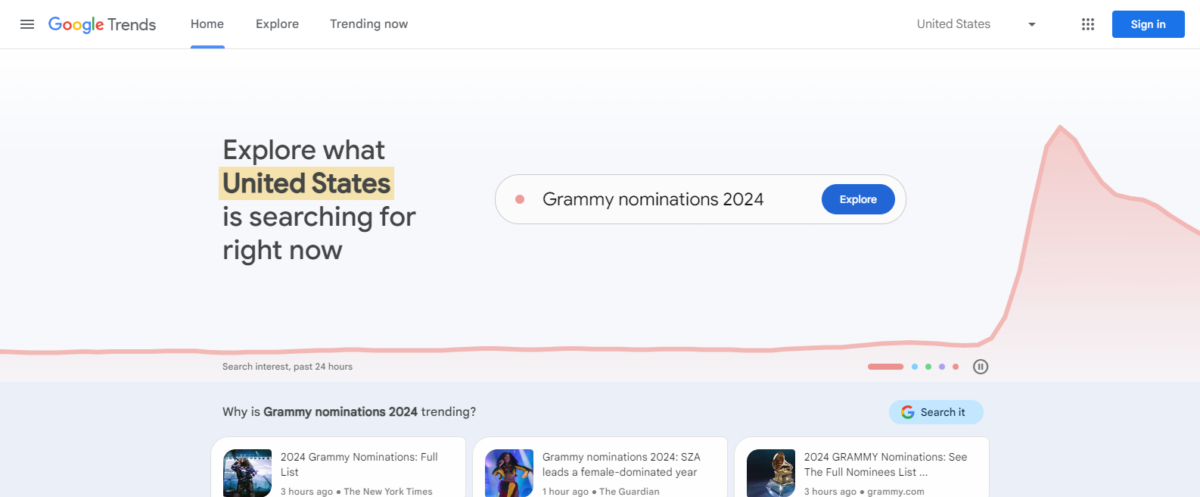
Trends
Second, identify what trends you want to lean into and why. Trends can be important. Being aware of them means knowing what others are doing and how your organization compares. But some trends can take you too far from who you are, so you don’t want to try to do all of them.
Exponential liked the masculine tones it was seeing on social media and wanted to change up its color scheme—without drifting too far from its current brand.
Pivot Summary
Next, sum up your seasonal brand changes in a pivot summary. Write one or two paragraphs explaining what’s changing and why. Share this with your entire team.
This summary is a bite-size reference for your entire team to understand the purpose of your seasonal brand. And it’s a resource to anchor in as you explore ideas. When you start making decisions down the road, you can hold up each idea next to your pivot summary to see if it fulfills your core idea or distracts from it.
Here’s Exponential’s pivot summary:
Exponential’s official brand and visual identity are a solid foundation to work from. However, they lack the connection and inspiration of our in-person gatherings and meetups.
For the rest of 2022 and into the 2023 Exponential Conference season, we’re setting our sights on what’s next by infusing our brand with joy, excitement, and energy!
As we look ahead to the conversations, tears, triumphs, paradigm-shifting moments, and plain fun, we’re shifting how we speak and look to capture our conferences’ energy while anchoring in key elements of our current brand.
Notice that the pivot summary talks about these things:
- What’s not changing (what works about the current brand)
- Why the seasonal brand is needed (the gap you need to fill)
- Seasonal offering you’ll market
- Time frame the seasonal marketing campaign will run
- Tone of the seasonal brand
- The offering’s key distinctive or selling point
RELATED RESOURCE: Branding for Churches—The Ultimate Guide
Messaging: How Do You Want Your Seasonal Marketing to Sound?
Now that you have the basics of your strategy set, it’s time to move to messaging. We recommend developing messaging before visuals because it’s where your communication triangle comes together. Your messaging synthesizes who your audience is, what they want, and how you can meet their needs.
Your messaging will include:
- A tone word
- An audience persona
- A brand promise or tagline

Tone Word
The first step in developing messaging is choosing a tone word. A tone word describes how you want your brand’s messaging to sound in this season.
In other words, when someone reads about your seasonal offering, how do you want them to feel?
For Exponential’s conference, they wanted to sound less official than their parent brand. Exponential wanted their audience to feel like they were talking to a friend.
So we chose these tone words for them:
Conversation
Friendly but not uncouth
Witty but not impractical
We also wrote a brief explanation of how the messaging could achieve this tone, like by using emojis and mixing serious and lighthearted elements:
We operate at the cutting edge of twenty-first-century ministry, but we’re also human beings who like to talk with our friends. In this season, we’re leaning into a conversational tone: witty and informal at times, yet always informative, insightful, and practical.
We’re not afraid to throw in a few emojis right next to deep insights on reaching people for Jesus. A lot like a conversation among good friends.
Audience Persona
All great brands know exactly who they’re talking to. (And remember, you’ve got the best brand in the world!) Seasonal brands are no different.
So the next step is to develop an audience persona to hone in on who your brand is reaching in this season.
A persona is a fictional vignette of who you want to reach. It includes these elements:
- Demographics: Age, gender, family, and employment
- Psychographics: Hopes and fears
- Shared win: How your organization helps these people specifically
Here’s Exponential’s persona for their seasonal conference brand:
Core audience: Men in their 30s who are church leaders (network and denominational leaders, lead pastors, thought leaders, etc.). Often have families with children.
Hope: Making an impact with their unique voices and gifts.
Fear: That they don’t matter.
What they’ll get: A place to share their voices, offer ideas, and find solutions that reenergize them and the communities they serve. A grassroots networking approach, not a top-down approach.
Brand Promise
Finally, synthesize your tone word, key distinctive, and audience hopes and fears into a brand promise.
A brand promise is a phrase that summarizes your primary value to your audience in this season.
The message your brand promise communicates is the shared win. It promises to fulfill the audience hope so their fear isn’t met. The way your brand promise makes people feel is your tone word.
Exponential’s conference tagline is this: “Revive, recharge, refresh.”
It tells the core audience what they’ll get by attending the conference: a sense of renewal.
And the alliteration creates the feeling they’ll have at the conference: the exciting sense of energy building.
RELATED RESOURCE: Why Your Church Needs Strategic Messaging
Visuals: How Do You Want Your Seasonal Marketing to Look?
The visual elements of your seasonal brand will include a pulse word, a mood board, a style
overview, and digital files packaged up nice and neatly.
We don’t recommend creating a new logo for your seasonal marketing campaign. Using your parent brand’s existing logo is key to brand recognition. Your familiar logo helps your audience see that they’re still interacting with you—just a different side of you.
Pulse Word
Similar to how you started with messaging, the first step in developing visuals is to choose a pulse word. A pulse word describes how you want the visuals to make people feel.
Exponential wanted people to feel vibrancy and excitement. They wanted people to feel how they’d feel at the conference. Here’s the pulse word we came up with for them, and a description of how we’d achieve that using specific design elements:
Life
In this season, we’re infusing our brand with life using visual elements to capture what it’s like to be part of the Exponential community.
We’re using warm, bright colors and gradients, dancing light from the stage, and subtle textures.
Clean, sans-serif typography will sit neatly within the surrounding warmth: highlighting the message without taking too much attention (and we might even use a serif a time or two).
Finally, candid, color-rich photos of people will take center stage: people smiling, talking, laughing, sharing, and worshiping. We’ll use photos full of the warmth and life present in all our in-person gatherings.
Mood Board
Next, develop a mood board by gathering examples of trends you want to lean into that match the look and feel you want for your seasonal brand.
A mood board is one of our favorite parts of ideation. It’s when we expand by gathering all the ideas, and then contract as we set aside what we don’t like. It also helps us see commonalities among what we like so we can intentionally head in that direction.
Our go-to tool for developing mood boards is Pinterest. (You can even use the Pinterest plugin to save images to your board when you’re on other sites.)
Here’s our process for creating mood boards:
- Search Pinterest and other sites for as much inspiration as possible.
- Look for examples of typography, colors, photography, graphic elements, and layouts.
- Slim your mood board down to the 5–10 most important images as a guide for future design decisions.
Here’s part of our Exponential mood board. Notice that the mood board has ideas for fonts, photography styles, colors, and layouts for printed documents and social images.

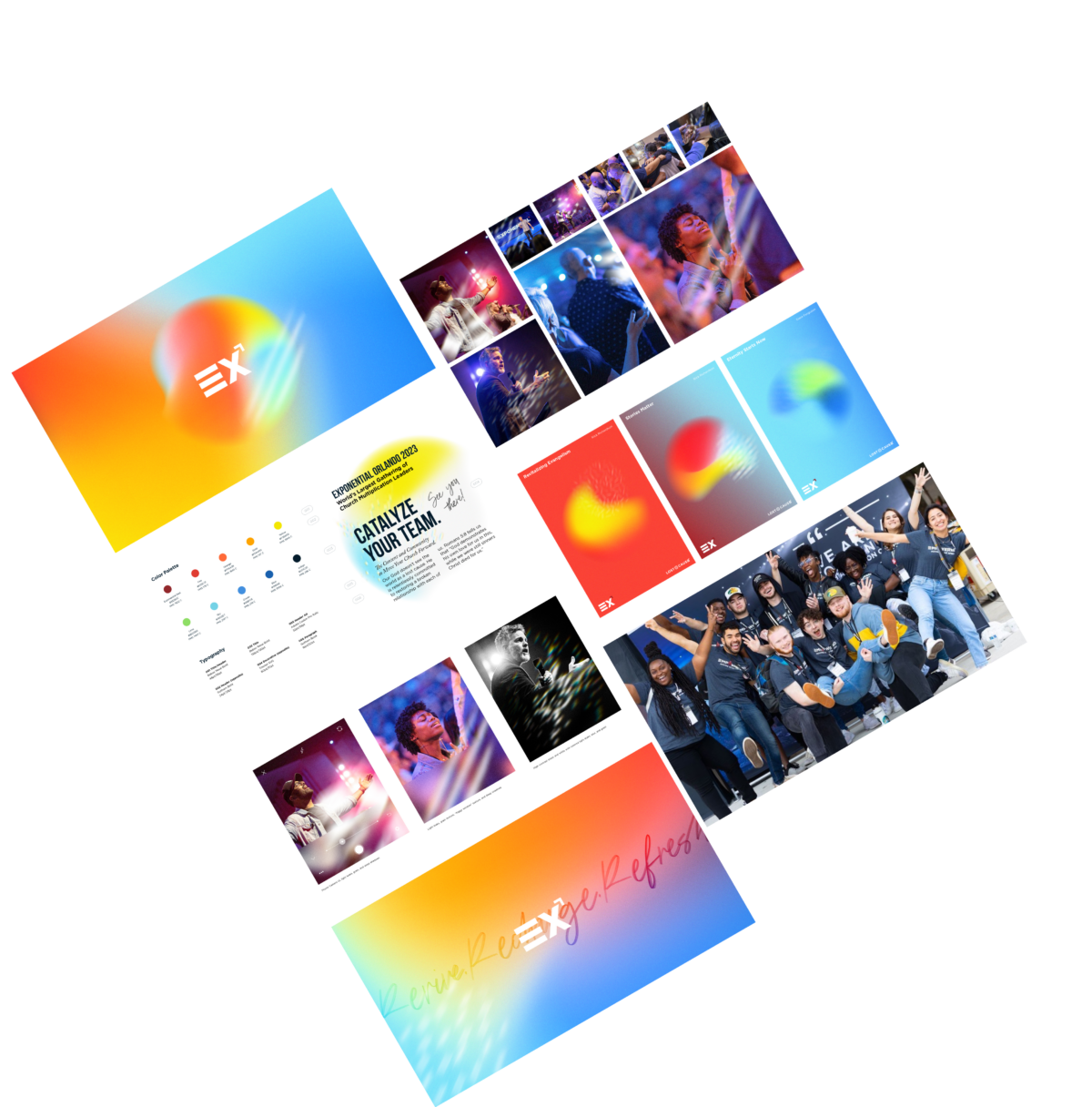
Style Overview
The style overview is where you make design decisions for your seasonal brand.
A style overview is a single reference document that summarizes what’s possible for this season. It includes guidelines for the following:
- Colors
- Typography
- Photography
- Graphic elements
- Layouts
- Mockups
This will be a designer’s go-to guide when they start creating deliverables. It also helps your entire team see how the seasonal brand will look in context, such as on social media, worship screens, printed documents, and merchandise.
In Exponential’s style overview, we created a vibrant color palette and chose strong, impactful fonts. We put together a mockup of how the visual elements and the messaging could look in a deliverable. We also included photography guidelines and filters to help every image convey the same look and feel.
Package it All Up
Once all visual elements are established, package source files for fonts, textures, patterns, icons, gradients, filters, and the like so they are accessible to designers via Adobe Creative Cloud. We also recommend saving your style overview as a PDF or JPG so it’s accessible to team members without Adobe.
RELATED RESOURCE: The ArtSpeak Guide to Effective Mood Boards
Application: Get Your Whole Team Onboard with the New Seasonal Brand
The final step in your seasonal brand process is holding a team meeting so your whole team knows what’s going on.
Talk through the following with your team:
- What’s changing and why
- Messaging and visuals
- Who needs to do what and when
This is a prime time to share everything you’ve developed, from the pivot summary and audience persona to the brand promise and style overview. Then you and your team can figure out together what the next steps are.
For Exponential, since ArtSpeak was an external consultant, we held a wrap-up call with their team to talk through their seasonal conference brand.
Equipped with their strategy, messaging, and visuals, their team went on to develop a marketing campaign that included an event website, social and email campaigns, and printed items and merch. Here are some of our favorite examples:



Bonus: Free Seasonal Brand Checklist
Branding for seasonal marketing is your opportunity to express a new idea, reflect the moment, or capture attention—without leaving your established brand behind.
If you’re not sure where to start, download our one-page seasonal brand checklist to use as your roadmap.
The checklist breaks down the branding process into four easy-to-follow phases. It’s got deliverables for each phase, what to cover in team meetings, and additional resources.
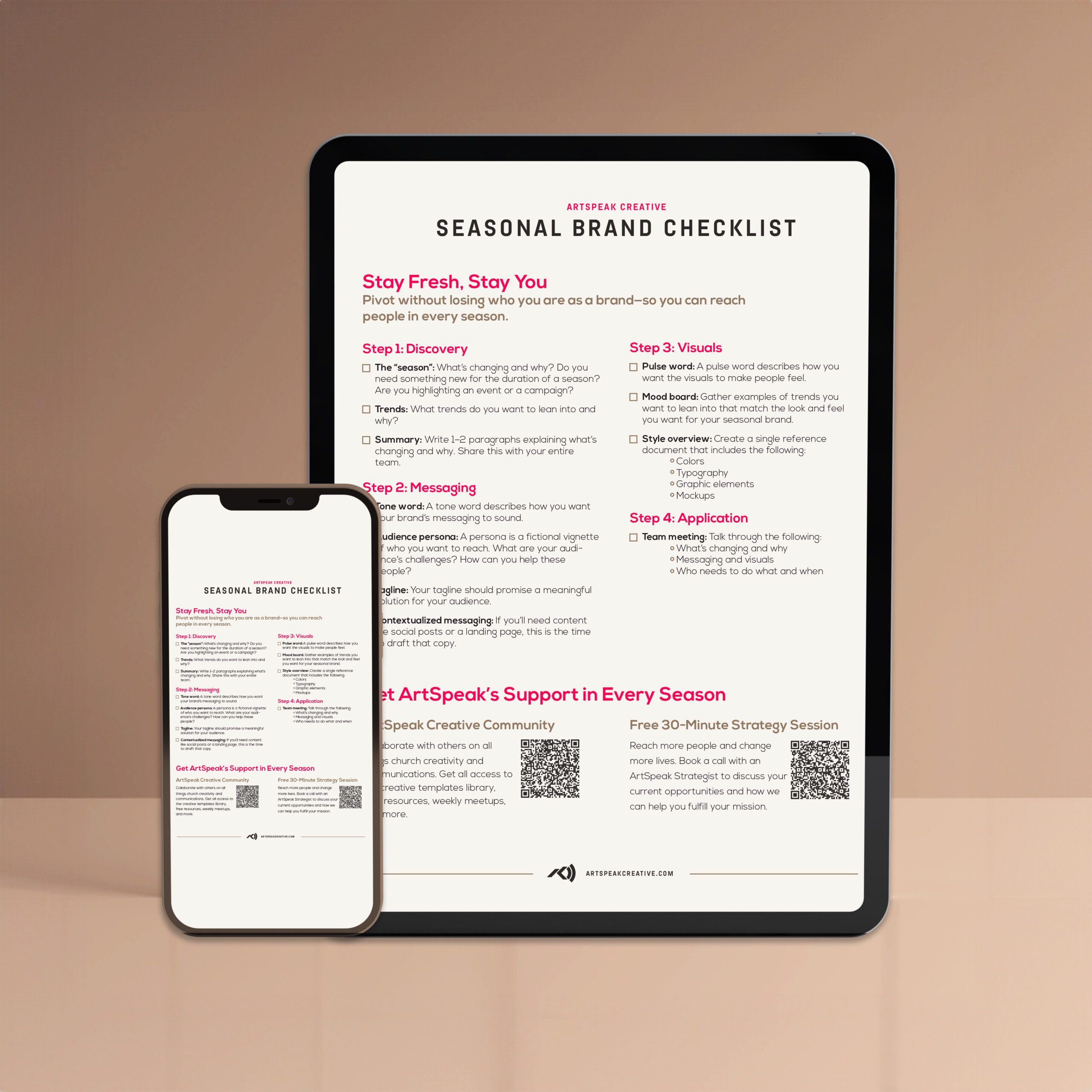
Download: Seasonal Branding Checklist
Need help with a seasonal brand refresh at your organization? Schedule a free 30-minute conversation with an ArtSpeak strategist. We’ll be a sounding board to help you figure out what you’re doing in the season ahead.
